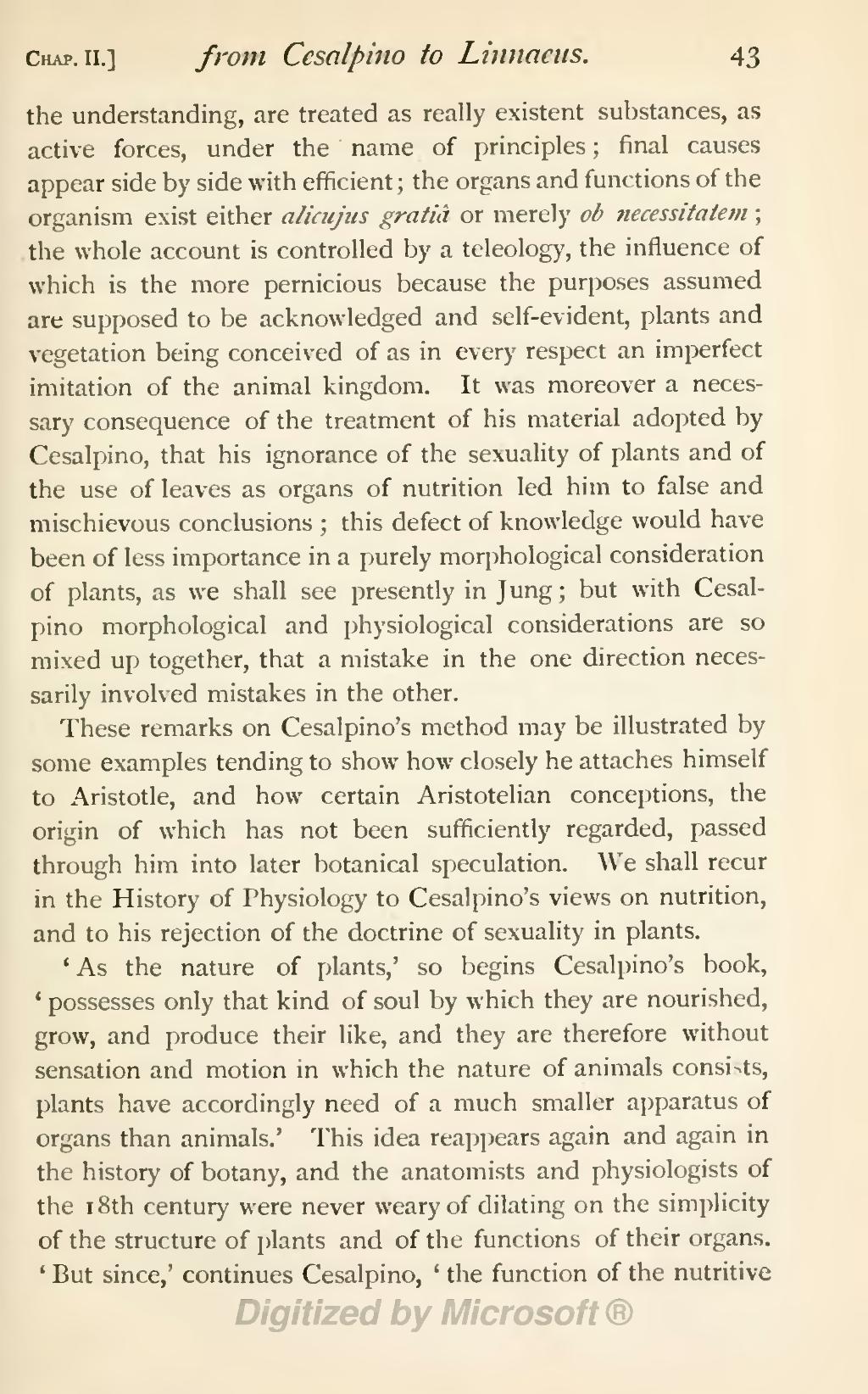the understanding, are treated as really existent substances, as active forces, under the name of principles; final causes appear side by side with efficient; the organs and functions of the organism exist either alicujus gratia or merely ob necessitatem; the whole account is controlled by a teleology, the influence of which is the more pernicious because the purposes assumed are supposed to be acknowledged and self-evident, plants and vegetation being conceived of as in every respect an imperfect imitation of the animal kingdom. It was moreover a necessary consequence of the treatment of his material adopted by Cesalpino, that his ignorance of the sexuality of plants and of the use of leaves as organs of nutrition led him to false and mischievous conclusions; this defect of knowledge would have been of less importance in a purely morphological consideration of plants, as we shall see presently in Jung; but with Cesalpino morphological and physiological considerations are so mixed up together, that a mistake in the one direction necessarily involved mistakes in the other.
These remarks on Cesalpino's method may be illustrated by some examples tending to show how closely he attaches himself to Aristotle, and how certain Aristotelian conceptions, the origin of which has not been sufficiently regarded, passed through him into later botanical speculation. We shall recur in the History of Physiology to Cesalpino's views on nutrition, and to his rejection of the doctrine of sexuality in plants.
'As the nature of plants,' so begins Cesalpino's book, 'possesses only that kind of soul by which they are nourished, grow, and produce their like, and they are therefore without sensation and motion in which the nature of animals consists, plants have accordingly need of a much smaller apparatus of organs than animals.' This idea reappears again and again in the history of botany, and the anatomists and physiologists of the 18th century were never weary of dilating on the simplicity of the structure of plants and of the functions of their organs. 'But since,' continues Cesalpino, 'the function of the nutritive
